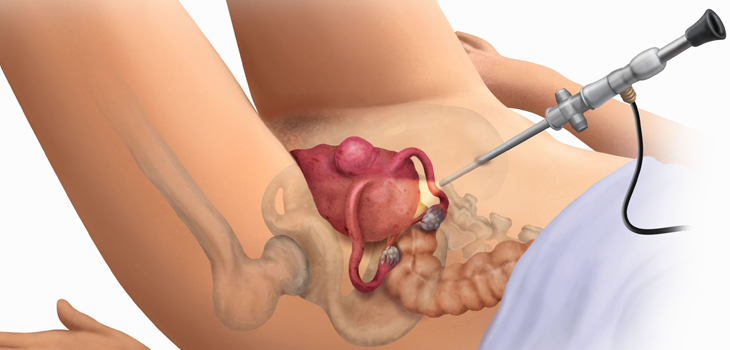
The Uterus removal surgery or Hysterectomy is a surgical procedure used for removal of the uterus (womb, the organ in which the baby grows during a women’s pregnancy) in women either partially or completely. At present, there many types of uterus removal surgery performed by surgeons; the type of surgery a patient needs is decided based on their medical history and the underlying cause for surgery. The uterus removal surgery is carried out to remedy certain conditions that affect the women’s reproductive system. These could include:
- Chronic or long term pain caused in the pelvic region.
- Development of Non-cancerous tumors or fibroids.
- Menorrhagia or menstrual periods with abnormally heavy or protracted bleeding.
- Development of Cancer in any portion of the patient’s reproductive system.
- Endometriosis or abnormal tissue growth outside the uterine lining.
- Uterine prolapse or sliding of the uterus from its standard position into the vaginal canal.
- Thickening of the uterus.
The uterus removal surgery is typically divided into three categories:
Partial or Supracervical Hysterectomy – The upper fraction of the uterus is surgically removed, without affecting the cervix portion.
Total Hysterectomy – The complete uterus including the cervix is surgically removed.
Radical Hysterectomy – The surgery involves the removal of the uterus, upper cervix portion of the vagina and the tissue lining on either side of the cervix. This method is mostly used only for the treatment of cancer patients.
There are different techniques used for Uterus removal surgery but generally, it depends on the surgeon’s experience, the patient’s overall health condition, and the underlying condition. The type of surgery used will determine the size and form of the post-surgical scar if any and the duration of healing and recuperation required by the patient.
There are two types of approaches used for Uterus Removal Surgery:
Traditional or Open Surgery
Abdominal Hysterectomy is a type of open surgery and one of the most commonly used procedure for 54% of all conditions that require removal of the uterus. In this procedure the uterus is removed through a cut in the lower abdomen. The surgeon performs a 6-12 inch incision either horizontally or vertically across the stomach and removes the uterus through this incision. The patient usually spends 2-3 days in the hospital post-surgery and this technique also leaves behind a visible scar in the place of surgery.
Minimally Invasive Procedure
Minimally invasive the procedure is more popular among patients due to shorter duration of healing and lesser to no visible scars post-surgery. There are several types of minimally invasive procedures available for removal of the uterus, few of which include:
Vaginal Hysterectomy – A minor incision is made in the vagina through which the uterus is removed. This procedure leaves no visible scars post-surgery.
Laparoscopic Hysterectomy – This procedure uses a laparoscope, a tube with a lighted camera. Surgical tools are inserted through several minor cuts or one small cut in the belly button. The surgeon performs the operation from outside using a video screen to view the area of surgery. The size of the incision is very small and the healing period shorter compared to open surgery. The duration necessary to stay in hospital after surgery may just be a single night and there are no visible scars post-surgery.
Robot-assisted Laparoscopic Hysterectomy – This a version of laparoscopic hysterectomy in which the surgeon uses a state-of-art robotic system to perform the operation. This procedure provides better visualization in comparison to general laparoscopic hysterectomy and offers a distinct advantage when performing complicated surgery such as radical hysterectomy for patients with cancer in their reproductive system.
After, undergoing the uterus removal surgery, a woman will enter menopause immediately if the ovaries have been removed too. In case, the ovaries haven’t been removed during the operation they may enter menopause at an earlier age. It is also essential to understand that after having a hysterectomy the patient will no longer have periods, which signals the end of fertility or inability to bear a child. Thus, many women wait for completing their family before opting for the surgery.
